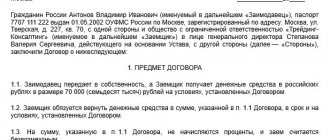Penalty or, more commonly, interest is money that is collected as a fine from the payer for late payment within the deadlines established by law. They may be charged taxes and insurance premiums. They are calculated for each day that elapses from the date when the payment was due until the day the debt is repaid. Calculated based on the refinancing rate. In this article we will look at the nuances of their accounting and the main entries for the calculation and payment of penalties for taxes.
The penalty is a percentage ratio of 1/300 to the refinancing rate of the Central Bank of the Russian Federation. The payer transfers the amount of penalties voluntarily or compulsorily (without the payer’s consent, the money is written off from his current account), simultaneously or after paying off debts on taxes or insurance fees.
Types of existing penalties
Before considering the question of how to post a fine or penalty in accounting, let’s figure out what sanctions of this kind may be. They are divided into two groups:
- Accrued by counterparties to each other in connection with violation of contractual obligations.
- Arising in case of non-compliance with tax legislation.
Sanctions of the first group are provided for in the texts of agreements concluded between counterparties as mutual and can equally arise for each of the parties. For example, penalties are usually established for the buyer for late payment, and for the supplier for failure to meet the delivery deadline. More serious sanctions (in the form of a fine) are intended to ensure the fulfillment of obligations that seriously affect the very fact of the functioning of the counterparty or lead to significant losses for it (including due to failure to fulfill obligations to a third party). The amount of sanctions arising between counterparties is indicated in the contract either directly (such as the amount of interest for each day of delay in payment or delivery) or by describing the calculation algorithm.
Situations in which penalties and fines are assessed for violations of tax legislation are given in the Tax Code of the Russian Federation; there are also indications of their specific amounts, and, in necessary cases, calculation algorithms. Here, taxpayers usually become the payers of sanctions, although in a number of cases (for example, a delay in the return of overpaid tax to the budget or the amount of VAT to be refunded), the same kind of responsibility is established for the tax authorities.
Thus, a specific legal entity may turn out to be both a payer and a recipient of payments from both groups, and accounting entries for fines and penalties will arise not only when accounting for expenses on them, but also when reflecting income.
Tax penalties: concept and calculation procedure
Penalty is one of the means of ensuring the fulfillment of the obligation to pay taxes and fees (Clause 1, Article 72 of the Tax Code of the Russian Federation).
This is the amount that the taxpayer must contribute to the budget in case of late payment of a tax, fee or advance payment of a tax (Clause 1, Article 75 of the Tax Code of the Russian Federation). In general, a penalty is charged for each calendar day of delay, starting from the day following the payment deadline until the day the arrears are repaid, inclusive. It is calculated as a percentage of the unpaid amount based on 1/300 of the refinancing rate of the Central Bank of the Russian Federation (clause 4 of Article 75 of the Tax Code of the Russian Federation).
The calculation can be represented as a formula:
P = N × Dn × 1/300 Sref,
Where:
N - unpaid or untimely paid amount of tax;
Days—calendar days of delay;
Sref is the refinancing rate of the Central Bank of the Russian Federation.
NOTE! From December 27, 2018, the amount of penalties is limited to the amount of arrears for which they are calculated. Read more here.
This formula applies to individuals, as well as to legal entities if the tax payment is overdue by up to 30 calendar days. If the delay is longer, then starting from the 31st day you need to take not 1/300, but 1/150 of the refinancing rate (for arrears that arose after September 30, 2017). That is, the complete formula for calculating penalties for organizations looks like this:
Read more about calculating penalties in the following articles:
- “How to correctly calculate tax penalties (nuances)?”;
- “How to correctly calculate VAT penalties?”.
You can calculate penalties for a specific situation using our Penalty Calculator service.
The taxpayer must pay the late payment penalty on his own (either simultaneously with the tax or after paying it). If this is not done, the inspection will charge a penalty. And it will not only accrue, but may even forcefully collect them at the expense of the taxpayer’s money or property (clause 6 of Article 75 of the Tax Code of the Russian Federation).
Reflection in accounting of sanctions under contracts with counterparties
How can accounting entries reflect fines or penalties that arise in relations with counterparties? Expenses or income generated by a legal entity in this case are among others (clause 7 of PBU 9/99 and clause 11 of PBU 10/99, approved by orders of the Ministry of Finance of Russia dated May 6, 1999 No. 32n and No. 33n). The chart of accounts (approved by order of the Ministry of Finance of the Russian Federation dated October 31, 2000 No. 94n) recommends using account 91 to reflect them, the credit of which will show income, and the debit - expenses.
The corresponding account for account 91 in the entry for reflecting a fine or penalty in accounting will be settlement account 76, to which the Chart of Accounts provides for the opening of a sub-account called “Settlements for claims.” Analytics in this sub-account is organized by counterparties and each arising claim.
That is, the entries for the accrual of penalties will look like this:
- Dt 91 Kt 76 from a legal entity reflecting the claim addressed to it (i.e. its expense);
- Dt 76 Kt 91 from a legal entity that has submitted a claim to its counterparty and is counting on the receipt of funds to its address.
The amount accompanying these postings will be determined in the same way for both entries: as corresponding to the volume of accruals, either recognized by the debtor or established by the court (clause 10.2 of PBU 9/99, clause 14.2 of PBU 10/99). Accordingly, the moment of reflection in accounting will coincide with the moment of either recognition or adoption of a court decision.
Payment of sanctions will be expressed by posting Dt 76 Kt 51 (transfer to the counterparty) or Dt 51 76 (receipt from the counterparty).
Important! ConsultantPlus warns The Russian Ministry of Finance identifies cases in which penalties are subject to VAT.
These are situations when... See K+ for more details. Trial access is available for free.
Penalty and VAT: should tax be charged?
There are 2 opposing points of view regarding this issue:
- VAT must be charged because, in accordance with subparagraph. 2 p. 1 art. 162 of the Tax Code of the Russian Federation, the tax base for VAT is formed from any amounts that are associated with payment for goods sold (and there is no obvious reason to consider the amount of the penalty as an exception).
- There is no need to charge VAT, since the agreement on penalties in accordance with Art. 331 of the Civil Code of the Russian Federation is drawn up separately from the main agreement of the parties. Therefore, the penalty should not be associated with payment for goods (letter of the Ministry of Finance of Russia dated No. 03-07-11/33051).
If we talk about the type of penalty accrued on the basis of Art. 317.1 of the Civil Code of the Russian Federation (on interest for illegal withholding of funds), the Ministry of Finance allows the accrual of VAT on the amount of such a penalty if there is a connection between it and payment for goods, without explaining the specific criteria for establishing the fact of such a connection (letter of the Ministry of Finance of Russia dated No. 03- 03-06/1/45600).
Thus, the taxpayer determines whether or not to charge VAT. If there is objectively no reason to consider the penalty related to the receipt of payment for the goods, no tax is charged.
But if the company believes otherwise, then VAT transactions will be reflected (by the authorized party) in the accounting registers using the following entries:
- Dt 91.2 Kt 76 (sub-account “VAT”) - VAT is charged on the amount of the calculated penalty;
- Dt 76 Kt 68 - VAT is charged on the amount of the penalty received;
- Dt 68 Kt 51 - VAT on the penalty has been paid.
The penalty under the contract can be written off by the entitled party. Let's study which entries reflect this in accounting.
How to reflect the accrual and payment of tax penalties and fines in accounting
The basis for making entries for penalties or fines assessed for payment to the budget are documents with the amounts of these payments issued by the tax authority:
- decisions based on the results of the audit;
- requirements for payment of taxes (contributions).
For the taxpayer, they represent an expense that must be reflected on account 99 or account 91, depending on the type of tax.
For which taxes the Ministry of Finance requires penalties and interest to be reflected on account 99, and for which on account 91, find out from the Typical Situation from ConsultantPlus by receiving a free trial access.
The corresponding account for tax sanctions will be account 68, in which both penalties and fines should be allocated for each tax (contribution) in the analytics.
The accrual of sanctions in favor of the tax authorities will thus be reflected by the entry Dt 99 (91) Kt 68, and the entry for payment of fines or penalties will look like this: Dt 68 Kt 51.
If the payer of sanctions against a legal entity turns out to be a tax authority, then the accounting entries in this case will be similar to those used when calculating similar payments arising under contractual relationships with other counterparties:
- Dt 76 Kt 91 - accrual of income under sanctions;
- Dt 51 Kt 76 - receipt of funds for their payment.
The Chart of Accounts does not provide for the attribution of such income to account 99. The use of account 91 in this posting indicates the preference for reflecting tax sanctions paid by the taxpayer through account 91, since this provides a more convenient comparison of income and expenses.
We use 99 account
This method has the main advantage: when using 99 accounting accounts, there is no difference between the accounting data and the generated reporting. In other words, accounting account 99 is not involved in determining the size of the taxable base. Consequently, the reflection of the amounts of accrued penalties and penalties (N/P) on the account. 99 will not lead to distortion of accounting information.
When creating entries on how to write off tax penalties, transactions are compiled as follows: account 99 is debited and at the same time account is credited. 68 for the corresponding subaccount:
- 68.1 - if penalties were accrued according to personal income tax;
- 68.2 - VAT payment is overdue;
- 68.4 - the organization paid income tax late, and the Federal Tax Service imposed a penalty.
If the N/A was issued for late payment of insurance premiums, then the accrual is carried out according to account 69.
The accounting entries will look like this:
Debit 99 Credit 68, 69 - penalties for late tax payments have been accrued.
Debit 68, 69 Credit 51 - transfers to the budget are reflected to repay the issued N/P.
Results
Sanctions reflected in accounting in the form of penalties and fines arise:
- in relations between counterparties due to violation of contractual relationships;
- in case of non-compliance with the requirements of tax legislation.
In both cases, a specific legal entity may be both a payer and a recipient of payments under sanctions. That is, entries for fines and penalties will reflect either expenses or income in his accounting:
- for settlements with the counterparty - Dt 91 Kt 76 (expense) or Dt 76 Kt 91 (income);
- for tax payments - Dt 99 (91) Kt 68 (expense) or Dt 76 Kt 91 (income).
Accounting analytics should be organized by counterparties and claims (for account 76), types of taxes and sanctions (for account 68), and assignment of sanctions (for account 91).
Sources:
- Tax Code of the Russian Federation
- Order of the Ministry of Finance of the Russian Federation dated October 31, 2000 No. 94n
- Order of the Ministry of Finance of Russia dated May 6, 1999 No. 32n
- Order of the Ministry of Finance of Russia dated May 6, 1999 No. 33n
You can find more complete information on the topic in ConsultantPlus. Free trial access to the system for 2 days.
In what cases may administrative sanctions be imposed on a company?
The Administrative Code contains dozens of articles, according to which a legal entity may be subject to penalties.
We list a number of the most common cases:
- In case of violation of traffic rules by drivers driving vehicles owned by the organization.
- In case of violations of labor legislation identified by Rostrud specialists.
- In case of violations of legislation on the protection of consumer rights by trade organizations.
- In case of violations of certain requirements of tax legislation that are not directly related to the payment of taxes (for example, deadlines for submitting declarations).
Opinions differ
The question of how to reflect the amount of penalties in accounting still causes controversy among experts. The duality of concepts is due to the fact that this term has different definitions in tax and accounting. Consequently, when calculating penalties and tax fines, the entries may differ.
For example, in accounting this term is defined as a penalty, that is, punishment for any misconduct or offense. But tax accounting does not provide for the combination of these concepts. In other words, in tax accounting these are completely different types of expenses, and it is unacceptable to take them into account in one account.
How to take into account the penalty for the entitled party?
In turn, the party that receives the counterparty’s penalty under the contract will reflect the following entries in the accounting records:
- Dt 76 Kt 91.1 (the penalty was recognized by the court or the parties in accordance with the supporting document);
- Dt 51 Kt 76 (the penalty is credited to the company’s current account).
Note that according to account 76, it makes sense for the authorized party (by the way, as well as the obligated party) to use a separate sub-account to account for penalties and other penalties under civil contracts - 76.2.
Separate nuances characterize the establishment of the company’s obligation to charge VAT on the received penalty (if the taxpayer works under the OSN). This issue is highly controversial. It will be useful to familiarize yourself with the arguments for and against the calculation of VAT in legal relations involving the formation of a penalty.
Penalty under an employment contract: how to take into account personal income tax and contributions?
If we are talking about the payment of a penalty to an individual under an employment contract (in the general case - in connection with a delay in wages), then other entries will be reflected in the accounting records:
- Dt 91 Kt 73 (the employer's penalties to the employee for wages have been accrued);
- Dt 73 Kt 51 or 50 (penalties paid).
The use of entries, which in turn are associated with the calculation of personal income tax and social contributions for penalties under employment contracts, is characterized by certain nuances.
A penalty under an employment contract is not subject to personal income tax if it is accrued within the limits established by the provisions of Art. 236 Labor Code of the Russian Federation. This is stated in paragraph 3 of Art. 217 of the Tax Code of the Russian Federation and is confirmed by the Ministry of Finance of Russia in letter No. 03-04-05/11096.
Don't know your rights? Subscribe to the People's Adviser newsletter. Free, minute to read, once a week. Subscribe I agree with the terms of personal data processing
If a collective agreement or a specific employment contract establishes higher standards, then personal income tax is also not charged on interest. But if such standards are not established at the enterprise, then when a higher compensation is actually paid, personal income tax is charged on the difference between this compensation and the standards prescribed in the Labor Code of the Russian Federation (letter of the Ministry of Finance of Russia dated No. 03-04-05-01/450).
Contributions for penalties under an employment contract are generally always accrued (letter of the Ministry of Labor of Russia dated No. 17-4-OOG-701). Although in judicial practice there are also opposing positions (for example, Resolution of the Presidium of the Supreme Arbitration Court of the Russian Federation dated No. 11031/13). But strictly speaking, according to the letter of the law, contributions must be calculated and, in order to avoid legal disputes, it is recommended.
If you need to reflect personal income tax on a contractual penalty, the following entries apply:
- Dt 73 Kt 68 (personal income tax withheld for a penalty);
- Dt 68 Kt 51 (NDFL paid).
Insurance premiums are reflected in the same entries as in the case of a civil contract.
Posting the accrual of transport tax in 1C
The 1C program automatically calculates auto tax and determines the necessary transactions.
How to calculate TN in 1C:
1Register the vehicle and set up the calculation of auto tax.
Select the “Directory” section and go to the “Transport tax” subsection.
Go to “Settings for calculation and accrual of TN”.
Indicate the capacity and tax rate at which the heating tax will be calculated.
Next, go to the expense reflection settings. As for which account to assign the car tax to, be sure to indicate “26” in the “Account” field. And in the “Cost Item” - select “Property Taxes”.
Fill in the “Payment Procedure” with the payment terms for TN in your region, as well as the terms for making advances.
2Calculate auto tax.
Go to “Month Closing”, click on “References-Calculations” and select “TN Calculation”. Here you can view the parameters by which the calculation is made and the full amount of the auto tax.
Where in the 1C program can I see the auto tax transactions?
You can view TN transactions in the “Month Closing” tab. Select “HP Calculation” here.
Next, click on “Show transactions”.






